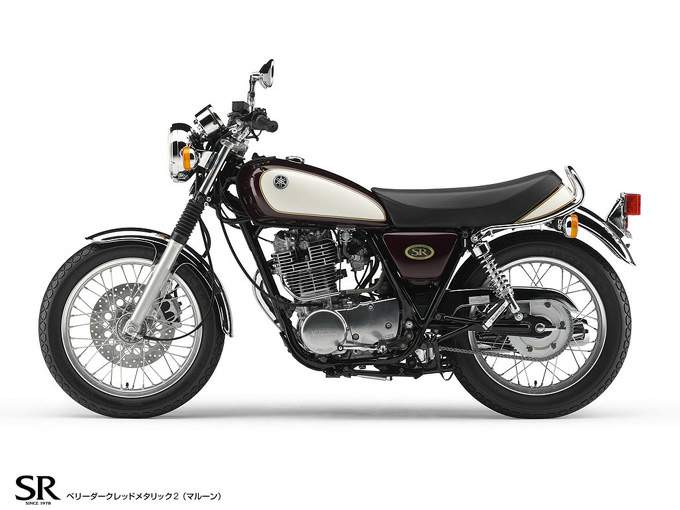
|
|
|
|
|
|
Classic Bikes
Custom Bikes
Individual
Racing Bikes AJP
AJS
Aprilia
Ariel
Avinton / Wakan
Bajaj
Benelli
Beta
Bimota
BMW
Brough Superior
BRP Cam-Am
BSA
Buell / EBR
Bultaco
Cagiva
Campagna
CCM
CF Moto
Combat Motors
Derbi
Deus
Ducati
Excelsior
GASGAS
Ghezzi Brian
Gilera
GIMA
Harley Davidson
Hero
Highland
Honda
Horex
Husaberg
Husqvarna
Hyosung
Indian
Jawa
Kawasaki
KTM
KYMCO
Laverda
Lazareth
Magni
Maico
Mash
Matchless
Mondial
Moto Guzzi
Moto Morini
MV Agusta
MZ / MuZ
NCR
Norton
NSU
Paton
Peugeot
Piaggio
Revival Cycles
Roland Sands
Royal Enfield
Sachs
Sherco
Sunbeam
Suzuki
SWM
SYM
Triumph
TVS
Ural
Velocette
Vespa
Victory
Vincent
VOR
Voxan
Vyrus
Walt Siegl
Walz
Wrenchmonkees
Wunderlich
XTR / Radical
Yamaha
Zero
Video
Technical
Complete Manufacturer List |
Yamaha SR 400
Auto-By magazine in Japan has tested the new fuel-injected Yamaha SR400 for MCN – revealing it has lost none of its charm. To clean the SR400’s emission for 2010 up Yamaha has replaced the carburettor with a fuel injection. It’s not a simple job though – a new exhaust with a catalyser and lambda sensor is also new (it’s slightly bigger than before), and a fuel pump is required to pressurise the injector. This created a problem – a bulky pump would affect the tank shape, so to get around it the fuel tank feeds fuel in to a small sub-tank under the left side panel (which is 10mm wider to cover it) containing the pump. An air-injection system is the final change to clean the exhaust gases up. Riding the bike reveals that it’s much the same as before – the chassis might be 30 years old but at 174kg with a low, narrow seat and wide bars, it handles well. You can’t rush it – smooth corner entry and throttle opening to gently load the suspension is the key to preventing wobbles, but while it isn’t nimble it’s good fun to thread through a series of corners. Peak torque is slightly lower, but the torque curve is fatter and more linear through the rest of the rev range, so it accelerates quicker with better throttle response, especially from 4000-5000rpm. The clutch has a lighter spring too, which makes life easier. Sadly, it’s only sold in Japan. A real shame – as a cool, easy to ride retro commuter the SR could win a few fans in the UK.  |
|
|
Any corrections or more information on these motorcycles will be kindly appreciated. |